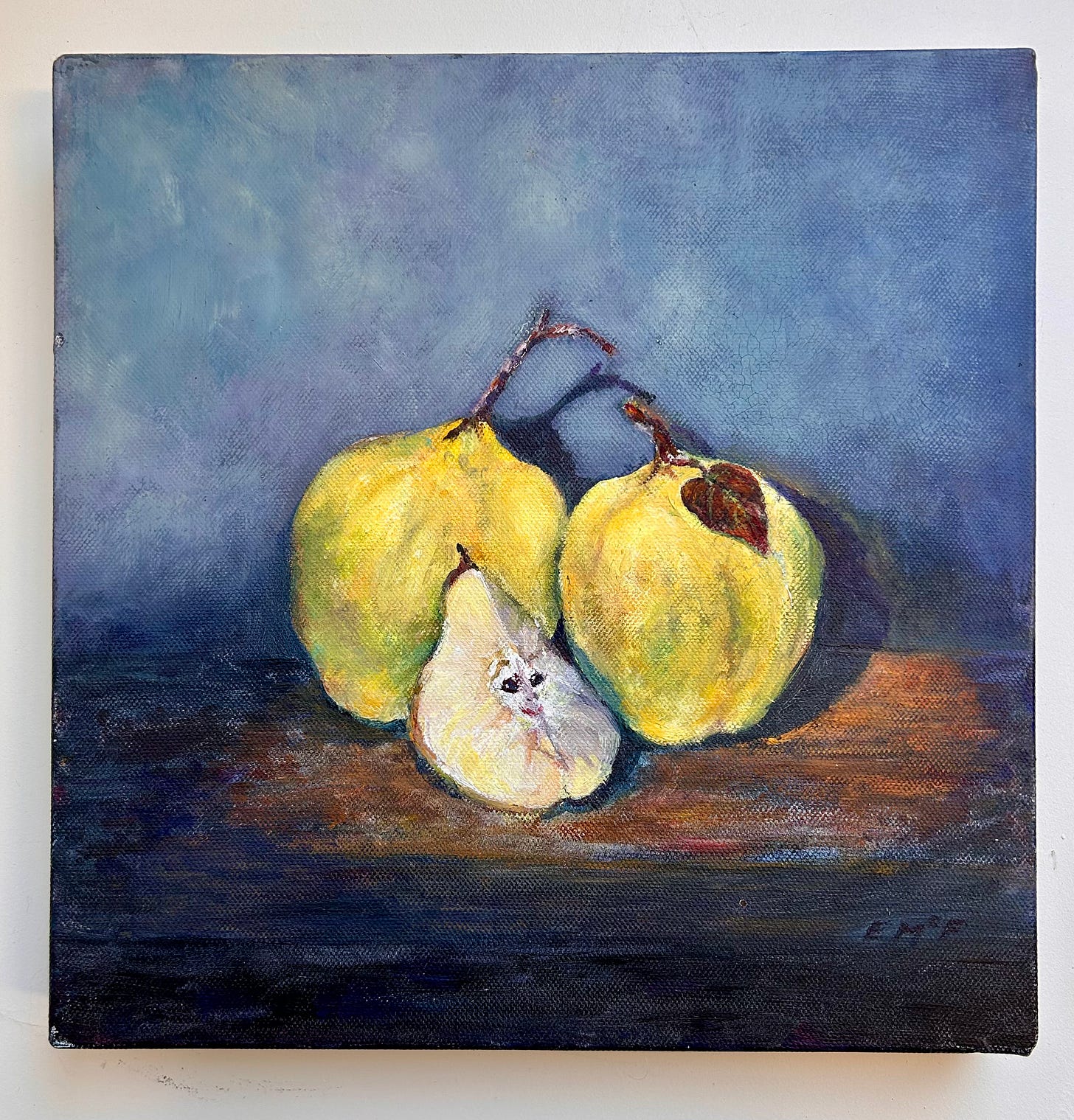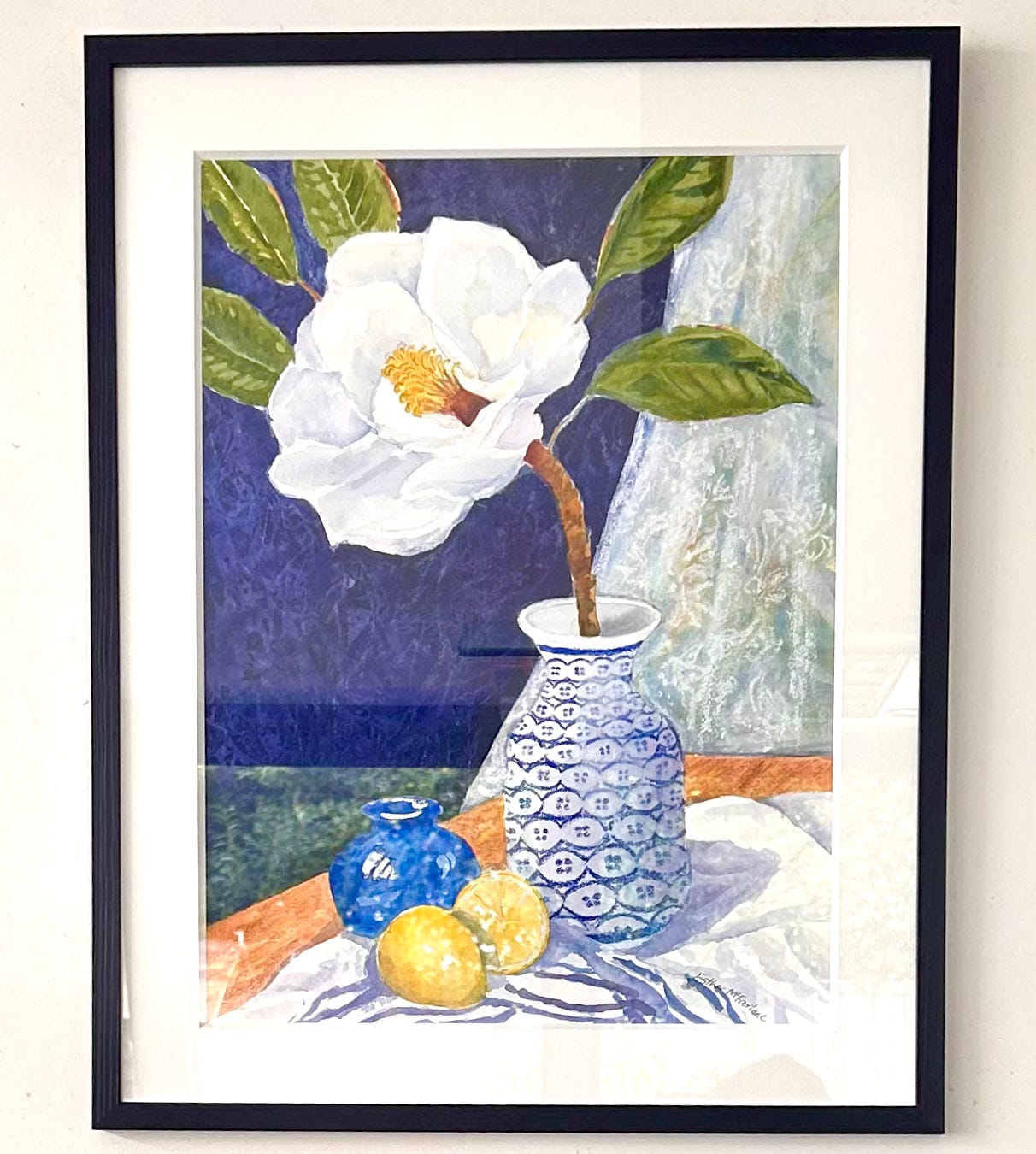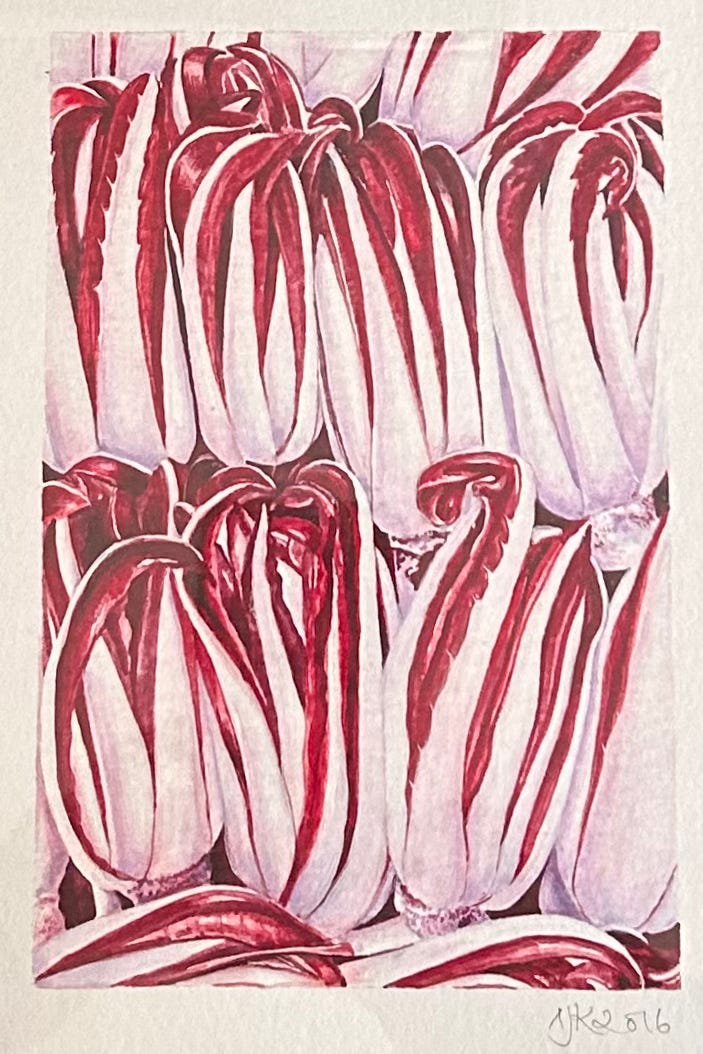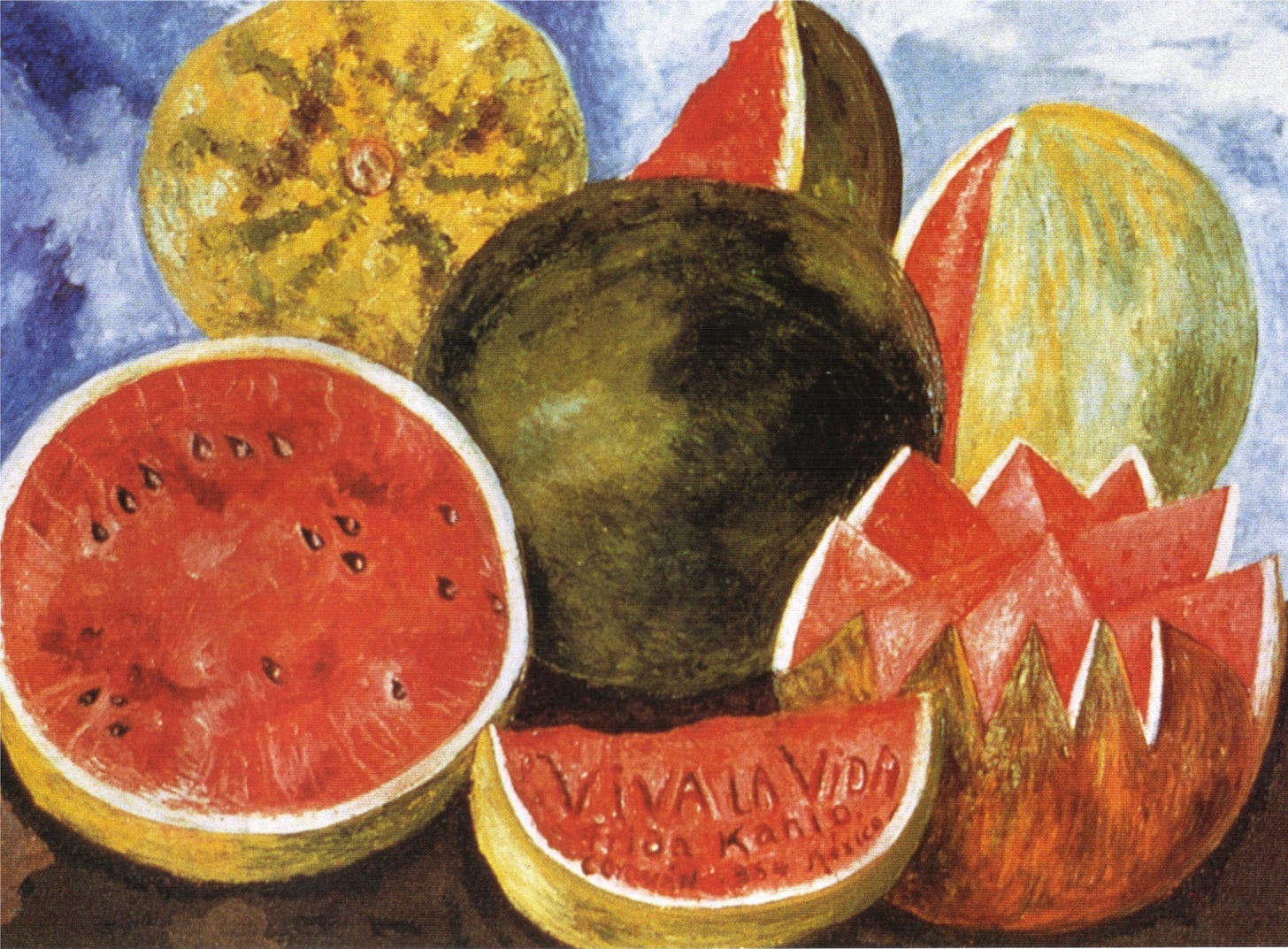Feasts for the eyes: why we adore paintings of food
Plus, links to artists whose food-focussed works I adore (you can buy some of them!) + an artist-inspired recipe for an incredible chocolate, chestnut and rum cake that's very easy to make.
There’s a painting of quinces on my kitchen wall that brings me happiness every day. The skin of the fruit is yellow and mottled green, the colours shining out from a muted background, the brush strokes on the canvas giving life to the quinces’ famously fuzzy skin. A piece of quince, reclining on a whole fruit, carries two seeds and a tiny piece of core, their arrangement resembling a smiling face. This is a hidden treasure, a reward for viewers who look closely enough at the work to spot it. I know this because the artist is my mother.
There’s another wonderful painting of hers nearby, of a billowy magnolia in a a blue and white vase. A sheer curtain in the background has caught a puff of wind, and in the foreground, a cut lemon waits patiently to be used, perhaps for lemonade.
Elsewhere on my walls is a striking nest of Radicchio Rosso di Treviso, their white-veined, wine-red leaves gently curling at the tips, like alien’s tendrils. On a shelf in the sitting room sits a black and white ink drawing of a morel mushroom, it’s cone-shaped cap clearly honeycombed, as if under the microscope. On other walls, there is cheese.
Can you tell that I adore art that involves food? These paintings and prints are very beautiful, of course, and bring me joy because they shine with colour and life, and genuinely lift my spirits each day. But it’s more than that. They allow me to see the mundane with fresh eyes, elevating everyday food that we often take for granted into something special. The miracle of seeds in a piece of fruit. The teardrop-shaped vesicles of a lemon, plump with juice, that cling together to form the flesh. The geometric intricacy of a mushroom cap. The crazed web of blue veins inside gorgonzola.
Food is a subject we all deeply connect with, says Anna Koska, the artist who painted my radicchios. “People do chime in with food in art,” she tells me. “It seems to be inevitably linked with happy memories of indulging in a certain food and that connection is an enduring one.” But it’s not just Koska’s subject matter that resonates; her exquisitely rendered work demands our attention. Whether it’s a crimson pomegranate, a scraggy mussel shell, a plump fig, or a shimmering mackerel on a plate, she finds intricacies, beauty, shades of colour and structures in edible things that often go unnoticed by the rest of us. And she paints them in incredible detail on a plain background, as if to say: the food is enough.
Food has been a prominent subject in art dating back to ancient times, of course. From the lavish banquets depicted in Roman frescoes to the intricate still lifes of the Dutch Golden Age, artists have long recognized food as a symbol of abundance, luxury, and the passage of time. Masters of the paintbrush have elevated meals – both simple and lavish – to the realm of high art, imbuing their arrangements with deeper meanings about wealth, taste, life and mortality. Today, still, paintings of food are enormously popular.
The Sunday Times recently reported that the Royal Institute of Oil Painters has dedicated this year’s annual exhibition to the subject. Perhaps predictably (because popular things have to be sneered at, don’t they?), The Times questioned the artistic merit of food as a focal point. “… [the reasons for the trend are] partly because more women are painting, focusing on their diurnal dishes, and partly because foodies have taken over our television screens, our advertising and our social media posts.”
Humbug to that, I say. Why should food be any less of a worthy subject for art than a landscape, a lilly pond, a can of soup or an artist’s mother? In the event that you, or someone you know, loves paintings of food, too, here are some glorious contemporary examples – and some of the artists have works for sale that would make extraordinary Christmas presents.
Keep reading with a 7-day free trial
Subscribe to Pen and Spoon to keep reading this post and get 7 days of free access to the full post archives.








